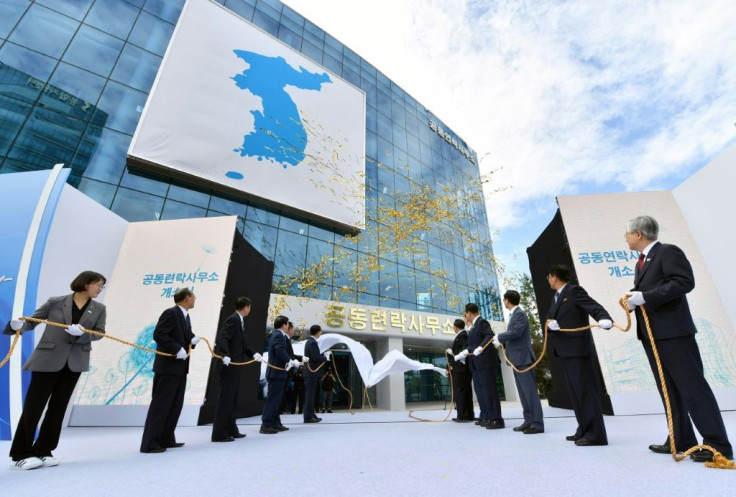Office Politics: Symbol Of Inter-Korean Liaison Reduced To Rubble
The inter-Korean liaison office that Pyongyang blew up on Tuesday was opened in September 2018 as part of an agreement the North's leader Kim Jong Un and the South's President Moon Jae-in signed at their first summit five months earlier.
The office occupied a four-storey building in an industrial zone in the North's city of Kaesong, where companies from South Korea employed Northerners, paying Pyongyang for their labour.
It was the first permanent physical communication centre for the two sides, with personnel from North and South staying at the compound to enable face-to-face contact at any time.
Southern officials occupied the second floor, with Northern representatives on the top level and meeting rooms inbetween.
Around 20 officials from each side were based there, headed by a vice minister-level appointee.
When it opened, a rapid diplomatic rapprochement was in full swing on and around the peninsula, with Kim and Moon about to hold their third summit in the wake of Kim's historic meeting with US President Donald Trump in Singapore.

At the time Seoul's unification ministry said it would become a "round-the-clock consultation and communication channel" for advancing inter-Korean relations, improving ties between the US and the North, and easing military tensions.
The office was open five days a week, with officials on standby for weekends.
But inter-Korean ties entered a deep freeze following the collapse of the Hanoi summit between Kim and Trump, and operations at the office were suspended in January because of the coronavirus pandemic.
Kaesong, site of the liaison office, was initially part of the South after Moscow and Washington divided Korea between them in the closing days of World War II, but found itself in the North after the 1950-53 Korean War, which ended in an armistice rather than a peace treaty.
The joint industrial zone was set up in 2004, under the presidency of the liberal Roh Moo-hyun in the South.
But president Park Geun-hye shuttered it in 2016 in response to the North's nuclear and missile tests, saying profits generated from it were linked to Pyongyang's weapons development.
© Copyright AFP 2024. All rights reserved.





















